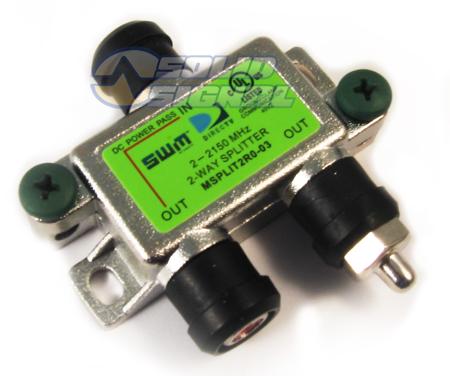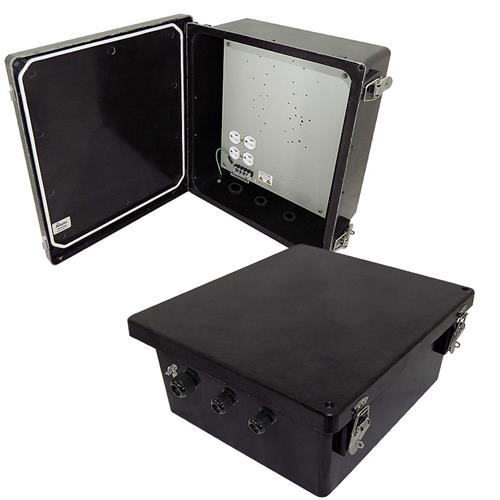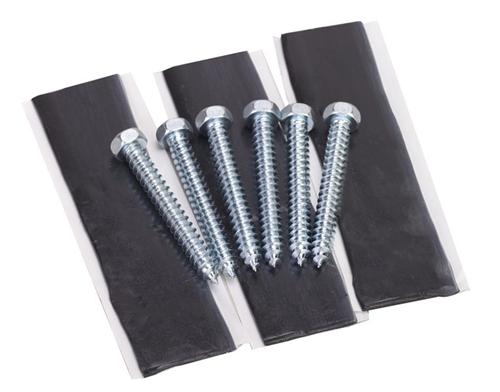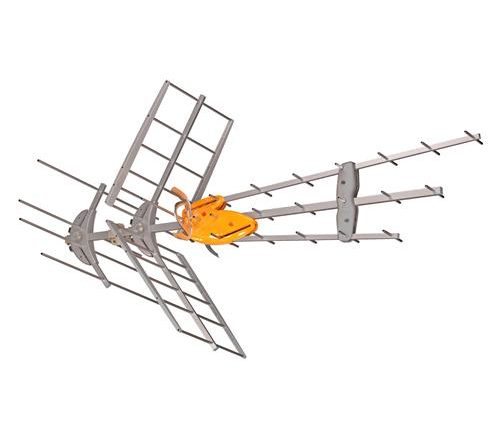The first snow’s right around the corner for much of the country. For some that’s a time of snowball fights, winter sports, and general mirth. For others it’s about dark grey days and time spent inside. No matter who you are, the one thing you should never be doing is going up on a roof to work on an antenna when it’s slippery and icey.
Winterize your antenna now
You actually don’t need to do much in order to winterize your antenna. Outdoor TV antennas are, of course, designed for outdoors. However there are a few steps you can take to make sure you’ll be getting great HD television all winter long.
Check those weather boots

Before I get a lot of comments, I know this is a DIRECTV splitter. I just wanted to show the weather boots.
Every coax connection should have some sort of weather sealing. In general this is done with rubber weather boots. You can see them here on this splitter. The boots may be rubber or plastic, and they may look like a long cone that fits over the connector. No matter what they look like you should have them on every connection and they should look like they are in good shape. You should not see any cracking or peeling. If you need to replace weather boots, there are a good supply of them at Solid Signal.
Is there a plastic enclosure on your antenna?

Any sort of black box on your antenna is there to hold sensitive electronics. (On Televes antennas, the box is orange.) Check to make sure that the box isn’t cracked in any way and look for any signs that weatherstripping or molding has fallen out or become worn. The box will probably be much smaller than this photo, which was the only one I could find that showed the point.
Are all straps and mounts tight?

As things get colder, they’ll shrink. A slightly loose connection could end up getting much looser. Your antenna could fall off in high winds if it’s not secured. Check carefully that J-mounts are nice and tight against the roof and that chimney straps are tightened up so that the antenna doesn’t move. Of course, be careful not to overtighten which could cause damage to your home.
Are all entry points nice and closed?

In the winter, water can get into your home through tiny holes. Check pitch pads and bushings to make sure that no water can come in, especially in through the roof. As a general rule I try to avoid drilling into the roof at all but if you have to, make sure you’ve left a water resistant seal around every hole.
This is the time.
You only have a few weeks left before the first snows come, so make sure you’re stocked up with supplies from SolidSignal.com and that your home is completely ready for the winter. When you’re snowed in, you’ll be glad you too the time.
By the way…
Just because you live down south doesn’t mean you’re immune from the effects of winter. For much of the south, winter is the wet time of year. For desert areas, it may be the only appreciable rain in months. You may not have realized how much of your home’s outdoor equipment has suffered from the southern sun. Now that the temperatures are a little milder, this is the time to check everything and be ready for another year.





